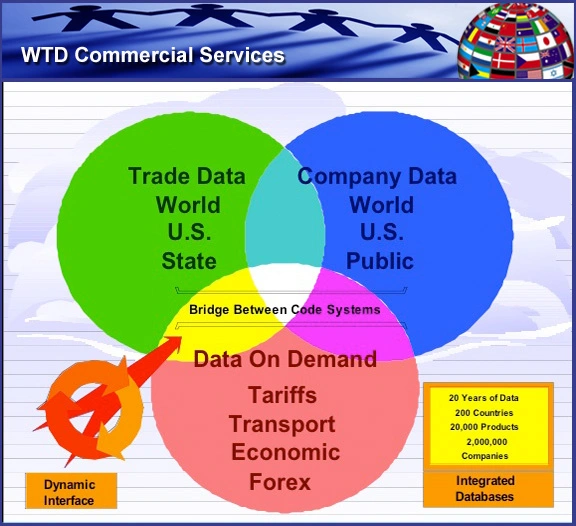Most people seem to want what they don’t have. I guess it’s human nature. It’s that way with trade intelligence. Folks want to extract more information from it than what is intrinsically possible. You just can’t get soda pop from milking a cow.
You aren’t going to get a complete picture of importers, supply chain, current inventory, shipment valuations and intrastate transport patterns from U.S. Customs data. However, just because you can’t have everything, doesn’t mean you can’t get a lot. As Mick Jagger sang, “You can’t always get what you want, but if you try sometime, you may find, you get what you need.”
 To understand what you can and can’t get from U.S. Customs data… we need to dig into what it is and why it is… what it has and what it doesn’t have… what current T.I. providers are doing to enhance the base data… where the holes are and how best to fill them.
To understand what you can and can’t get from U.S. Customs data… we need to dig into what it is and why it is… what it has and what it doesn’t have… what current T.I. providers are doing to enhance the base data… where the holes are and how best to fill them.
U.S. Customs, now under the auspices of Homeland Security, requires detailed documentation of all waterborne shipments entering into the United States. This information must be filed 24 hours before the shipment disembarks from its originating foreign port.
Once the carriers dock at their respective domestic port, each day’s documentation of shipments (midnight cut off point) is published and distributed via FTP (used to be sent via overnight on a DVD) to awaiting subscribers (of which there are only a couple handfuls). This is made available through the Freedom of Information Act.
First of all, with the exception of UBM Global Trade /PIERS, who has special reciprocal information exchange deals with many ports and carriers as well as a cadre of data gathers assigned to many U.S. ports, only daily transactional data on U.S. IMPORTS is available, NOT EXPORTS. Thus, as a U.S. manufacturer, you aren’t going to find a list of foreign buyers for your particular product within the confines of U.S. Customs data.
Secondly, only commodities and products that enter the U.S. via SHIP (waterborne freight both containerized and non-containerized) are accounted for. Shipments that come via TRUCK or RAIL, let’s say from our North American neighbors – Canada or Mexico – are invisible. Also absent are shipments that come via AIR.
Therefore, if you’re looking for U.S. Customs data to provide information on shipments of high-tech components, you’re going to be very disappointed (because they are mostly shipped by air). If you want competitive intelligence on a company who largely imports from suppliers in Mexico, again, you’re going to become very frustrated. If you’re after an accurate analysis of all foreign suppliers and U.S. importers for a particular component that may have originated from several countries (including our NAFTA neighbors) and shipped by multiple means (air, rail, truck, ship), it just isn’t going to happen. There are going to be huge, gaping holes in your report.

Available U.S. Customs data ONLY details inbound waterborne shipments, NOT U.S. exports and NOT trade activity by rail, truck or air.
- Check out our commercially available technologies, products and services. Contact: Robert@WorldTradeDaily.com
- ©WorldTradeDaily.com® All rights reserved. Robert Thompson, Editor-in-Chief. Louisa Avery, Editor. Isaac Thompson, Research Writer.
- For discounted subscriptions to PIERS Prospects and Stats Plus contact: Aliet Martinez: amartinez@piers.com and mention “World Trade Daily”.


 18/07/2013
18/07/2013 
























































































































































































































































































































































FYI. Panjiva does seem to have transactional data on US Exports as claimed on their website.
P.S. The title picture is from the best song from a band named Data. If anyone is interested, here is the the song on youtube! Check it out!
Wow. Thanks. That’s observant. Cool.